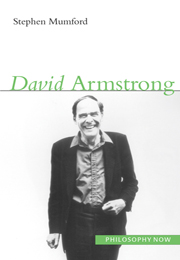7 - Sensations and perceptions
Summary
There is a distinctly philosophical problem of perception that would remain even if we knew all the facts of physics and biology. Suppose we knew all the science of what happens when we see something. We know that light waves enter the eye. We know how they land on the retina and how a corresponding stimulus is sent down the optic nerve. We even know the physical facts, or most of the physical facts, of what happens when the signal reaches the brain. We know that certain neurons move in a certain way, firing and sending a signal to a connected neuron. But, even if we understand all this, do we still really understand what perception is? Do we even know what it is that we see? Do we see physical objects in the world? Do we see light? Do we see the contents of our eyes? Or do we see our own ideas in our minds, at the end point of the causal process of perception? In philosophical terms, this is the question of the object of perception and science does not answer this question nor even attempt to answer it. Here is a case where it is philosophy, and philosophy alone, that allows us to understand some aspect of the world. It is a case where we need to get our thinking in order to grasp the way some portion of the world works.
Information
- Type
- Chapter
- Information
- David Armstrong , pp. 111 - 128Publisher: Acumen PublishingPrint publication year: 2007
